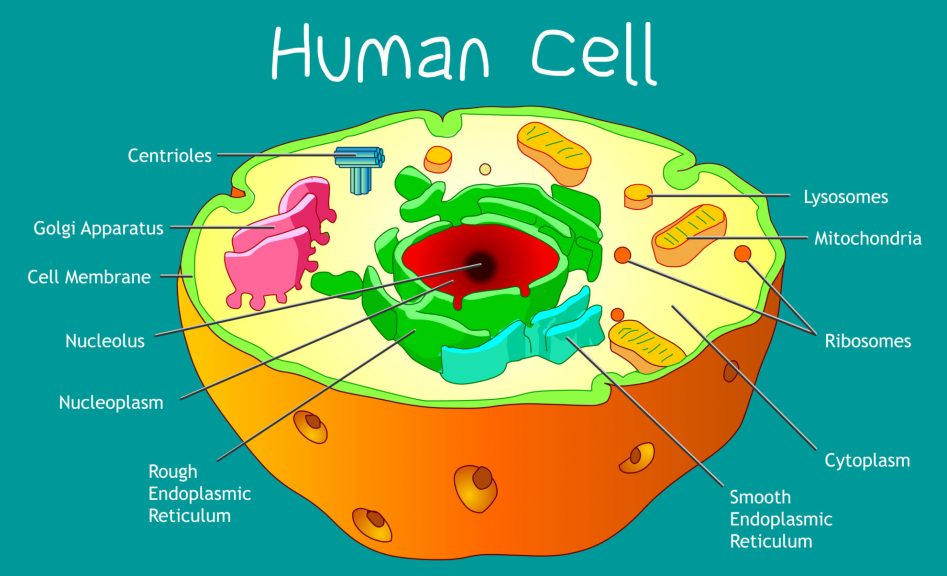
Cell Membrane Definition Biology Functions Cell Diagram
Division and differentiation in human cells When cells express specific genes that characterise a certain type of cell we say that a cell has become differentiated. Structure and replication of DNA

Human cell anatomy and organels diagram
Human Cell Diagram, Parts, Pictures, Structure and Functions The cell is the basic functional in a human meaning that it is a self-contained and fully operational living entity. Humans are multicellular organisms with various different types of cells that work together to sustain life.

Labeled Diagram Human Cell
Cell types Cells are broadly categorized into two types: eukaryotic cells, which possesses a nucleus, and prokaryotic cells, which lack a nucleus but still has a nucleoid region. Prokaryotes are single-celled organisms, whereas eukaryotes can be either single-celled or multicellular. [15] Prokaryotic cells Structure of a typical prokaryotic cell

The Human Cell Atlas An international effort
Diagram of the human cell illustrating the different parts of the cell. Cell Membrane The cell membrane is the outer coating of the cell and contains the cytoplasm, substances within it and the organelle. It is a double-layered membrane composed of proteins and lipids.
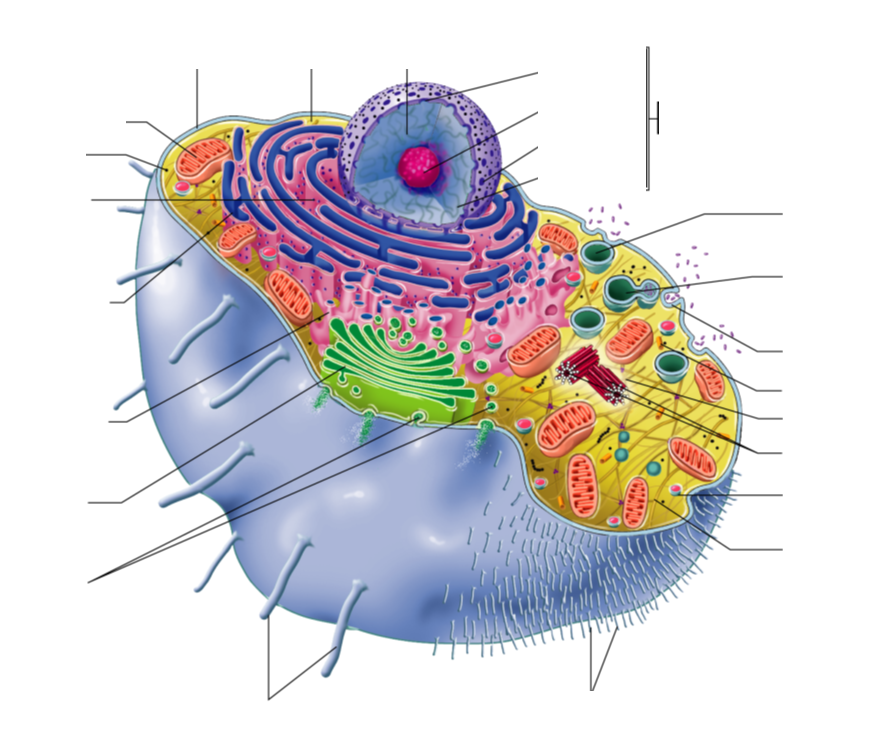
generalized human cell, labeled Diagram Quizlet
Muscle tissue is made up of cells that have the unique ability to contract or become shorter. There are three major types of muscle tissue, as pictured in Figure 10.3.14 10.3. 14: skeletal, smooth, and cardiac muscle tissues. Skeletal muscles are striated, or striped in appearance, because of their internal structure.

[DIAGRAM] Parts Of A Cell Diagram
The Glucose transporter 1 (GLUT1) is one of the most abundant proteins within the erythrocyte membrane and is required for glucose and dehydroascorbic acid (Vitamin C precursor) transport. It is widely recognized as a key protein for red cell structure, function, and metabolism. Previous reports highlighted the importance of GLUT1 activity within these uniquely glycolysis-dependent cells, in.

human cell Diagram Quizlet
Diagram 1: The anatomical presentation of the human cell. Picture Source: www.printablediagram.com How many cells are in the human body ? Ans : Approx. 37.2 trillion cells What are the different parts of the human cells? How do these parts function? Cell membrane It is the outer covering of the cell, which consists of proteins and lipids.
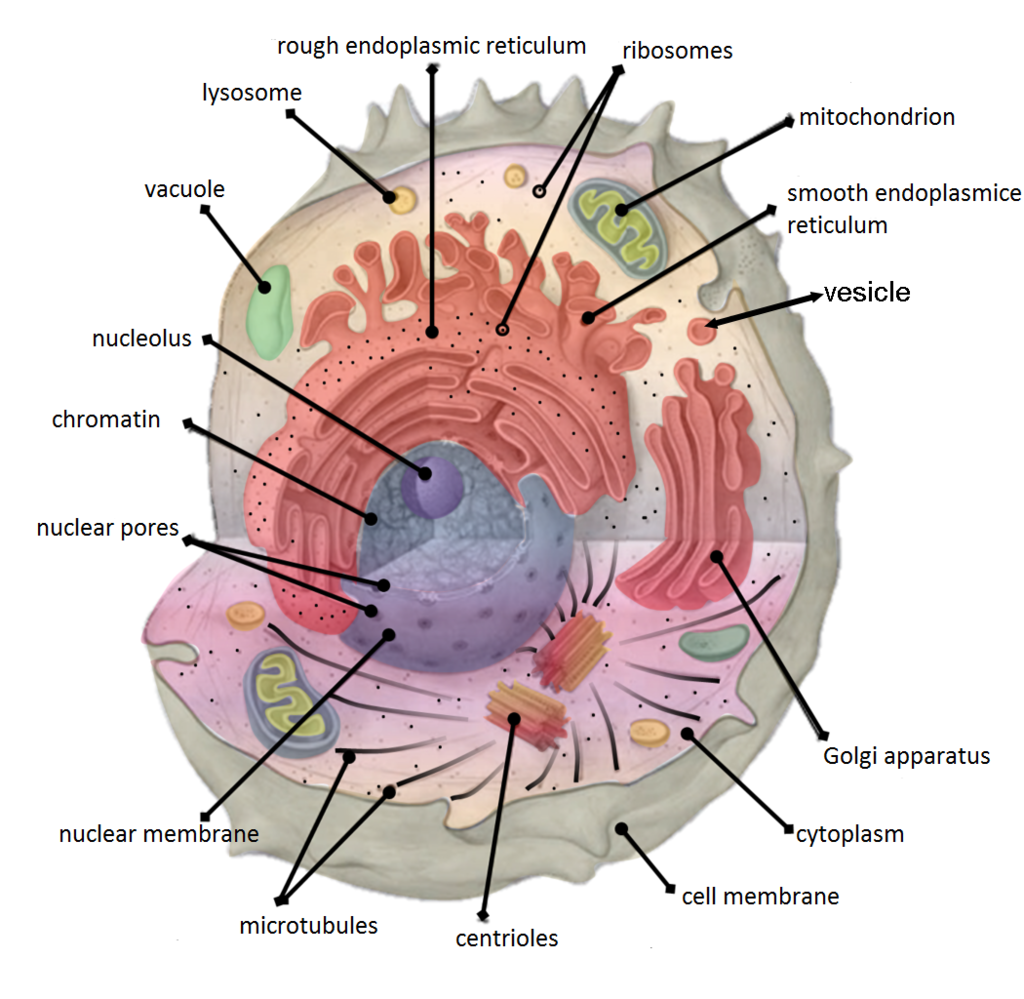
4.5 Cytoplasm and Cytoskeleton Human Biology
Human biology. Unit 34. Plant biology. Unit 35. AP free response worked examples. Unit 36. Crash Course: Biology and Ecology. Unit 37. Meet the biology professional. Science;. Structure of a cell: Quiz 2; Structure of a cell: Unit test; About this unit. This unit is part of the Biology library. Browse videos, articles, and exercises by topic.

Cell Nursing
Interactive guide to stem cells and cell biology with 3D models and real microscopy data of GFP labeled hiPSCs.

Education Chart of Biology for Human Cell Diagram Best Acupuncture llc
Cells of humans typically have a mass 400,000 times larger than the mass of a single mycoplasma bacterium, but even human cells are only about 20 μm across. It would require a sheet of about 10,000 human cells to cover the head of a pin, and each human organism is composed of more than 30,000,000,000,000 cells.
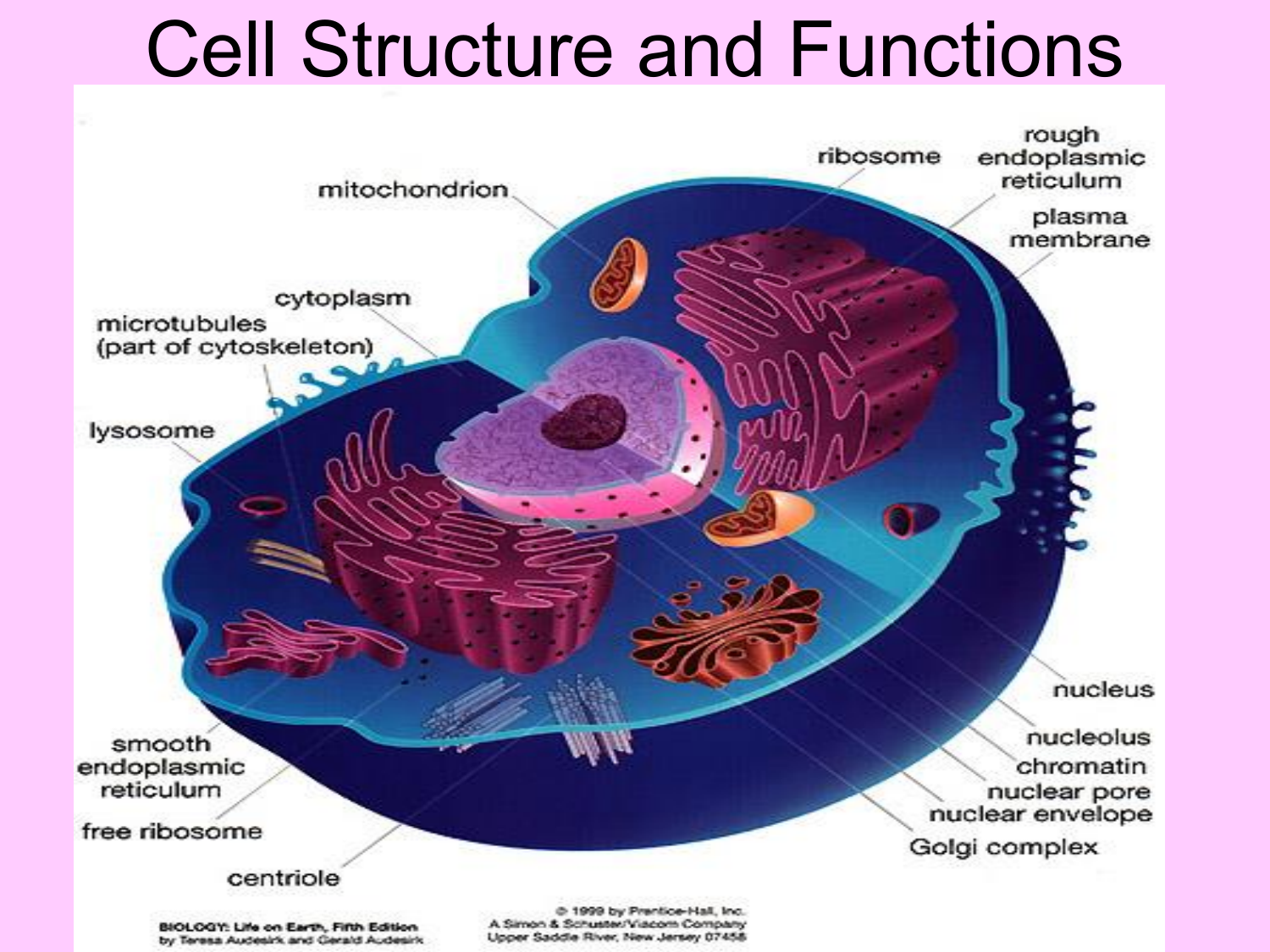
Cell Structure and Functions
A cell is the smallest living thing in the human organism, and all living structures in the human body are made of cells. There are hundreds of different types of cells in the human body, which vary in shape (e.g. round, flat, long and thin, short and thick) and size (e.g. small granule cells of the cerebellum in the brain (4 micrometers), up to the huge oocytes (eggs) produced in the female.
:background_color(FFFFFF):format(jpeg)/images/library/12788/histology-eukaryotic-cell_english.jpg)
human cell diagram with labels
A human cell diagram provides a visual representation of the different components and organelles within a cell. An unlabeled human cell diagram, in particular, offers an excellent learning tool for students and researchers, encouraging them to identify and label the various parts independently.

Infographic Anatomy of a Cell
The human (mammalian) cell is a complex structure able to carry out all the functions required to maintain cell life and also makes its contribution to homeostasis through the activities of the different organelles (small organs) within the cell. Figure 2.1 illustrates a generic cell filled with the liquid cytoplasm
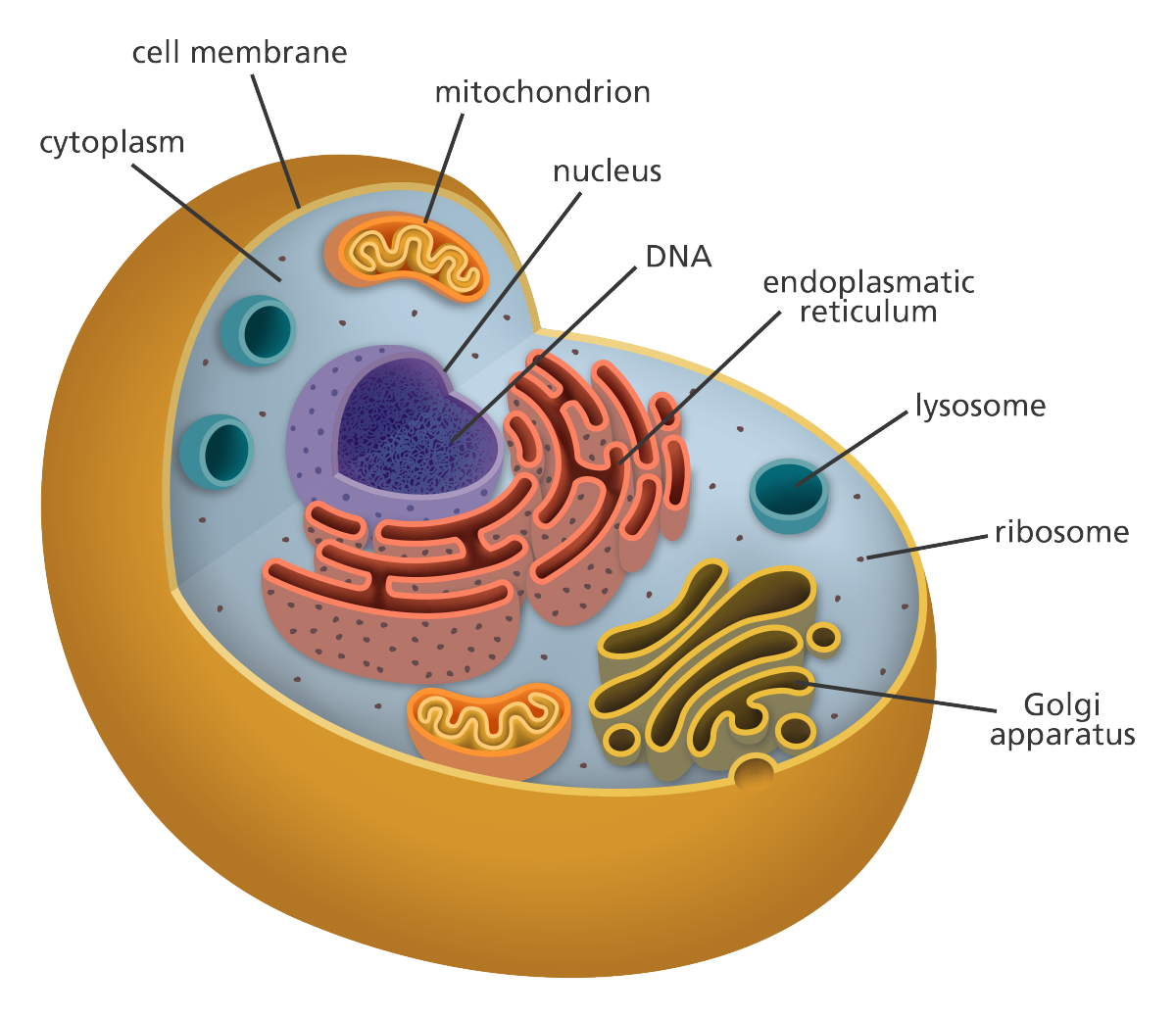
The Cell Theory & Structure HubPages
It consists of 258,385 cells from 14 different classes, with a large variation in the number of cells per class, ranging from as low as 323 cells to as high as >47,000 cells.

69,023 Human Cell Structure Images, Stock Photos & Vectors Shutterstock
Key points: All cells have a cell membrane that separates the inside and the outside of the cell, and controls what goes in and comes out. The cell membrane surrounds a cell's cytoplasm, which is a jelly-like substance containing the cell's parts. Cells contain parts called organelles. Each organelle carries out a specific function in the cell.
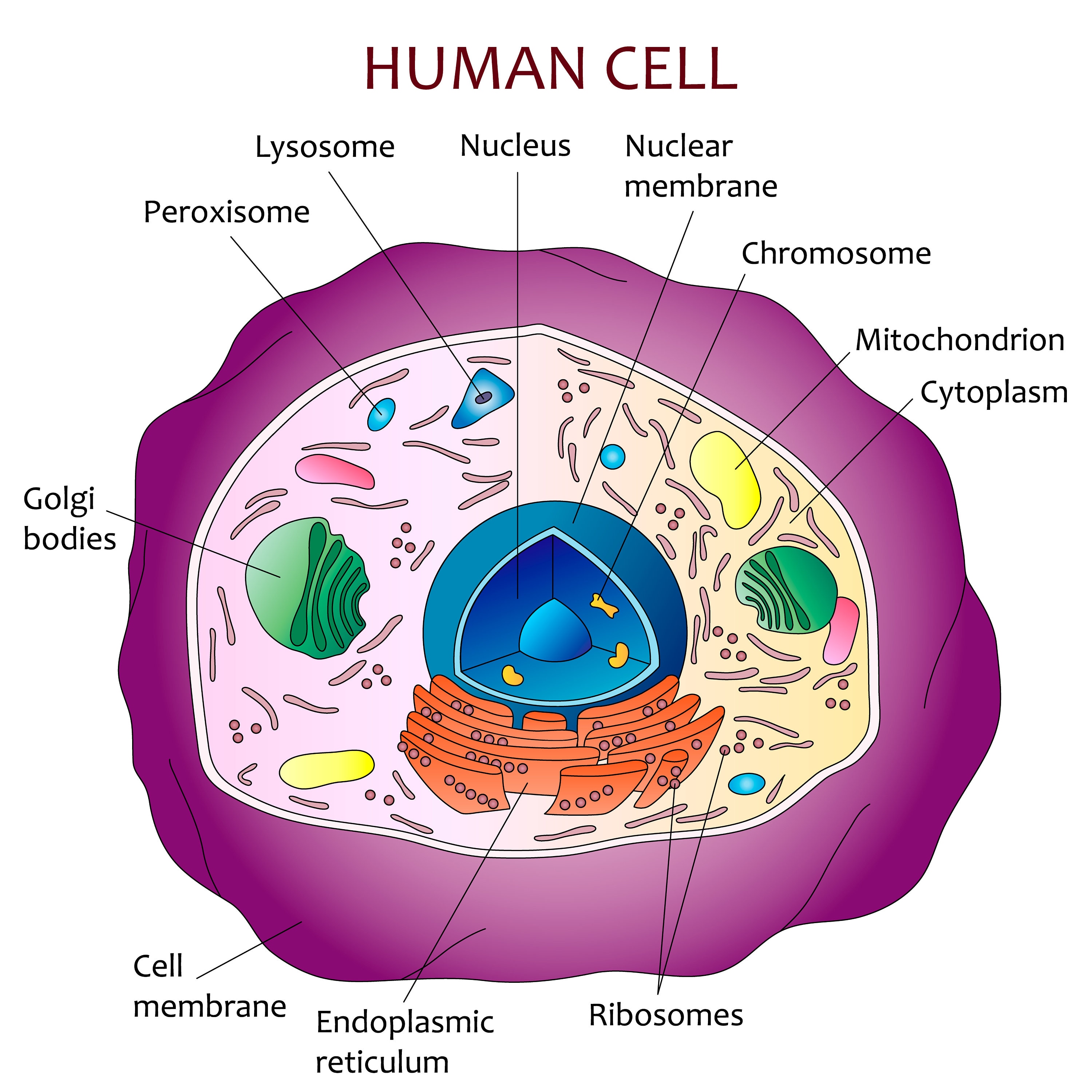
Human cell diagram Etsy
Cell Structure Ideas about cell structure have changed considerably over the years. Early biologists saw cells as simple membranous sacs containing fluid and a few floating particles. Today's biologists know that cells are infinitely more complex than this. There are many different types, sizes, and shapes of cells in the body.